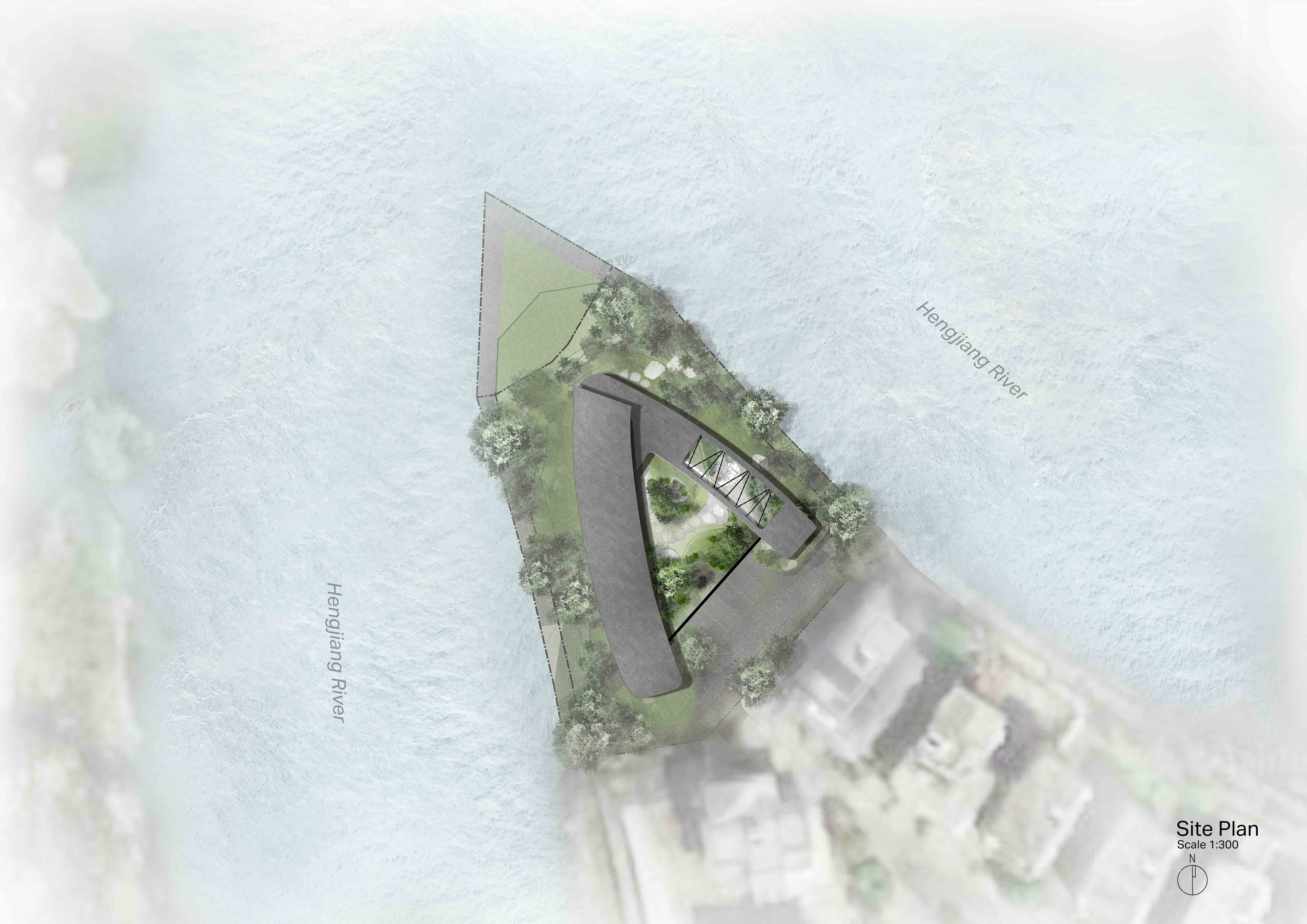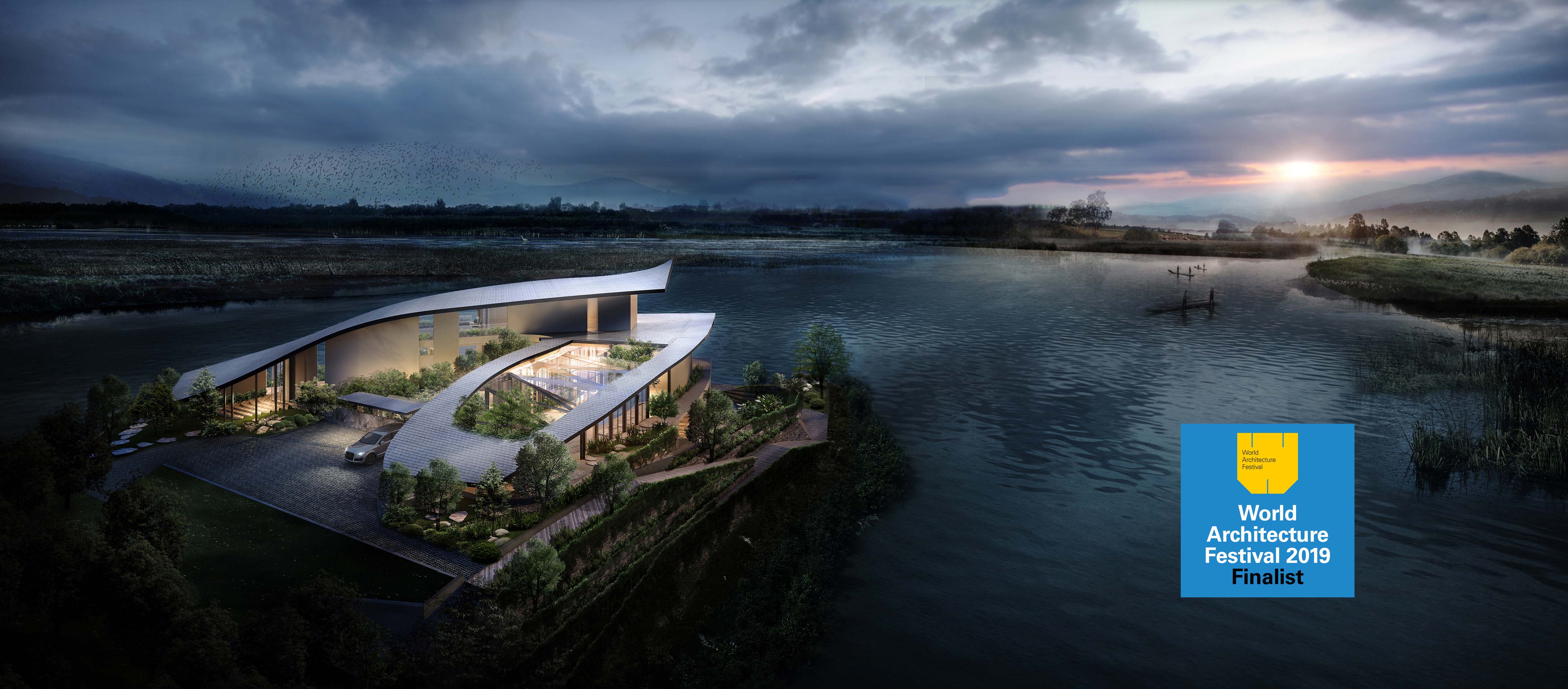Huangshan House is a WAF Finalist!
Huangshan House
Architecture has always had a complex relationship with nature. Throughout the history of architecture and construction, the relationship between architecture and the natural world has cycled between a harmonising and a contested one. Going back to the very beginning, man built for shelter for protection from nature. We have very quickly since learned and evolved - for better or for worse - to conquer, almost dominating nature to create man-made environments away from, and that are independent of nature. It is only in very recent times that we have recognised our ill-considered past, accepting that the only way forward is for us to coexist with the natural world.
Huangshan House is sited in its namesake Huangshan in Anhui province in China, a place well-known for its beautiful mountainous landscape, especially its granite peaks that have been the recurring subject of traditional Chinese paintings. The client presented to us a 2,000sqm piece of land that sits at the very tip of an artificial island, overlooking Hengjiang River, a major river that forms an important part of the identity of local residents.
The site is a clear example of man over nature - an island fueled by and built by the vanity of man, disrupting the flow of the river. In response, we imagined Huangshan House as a home and as a piece of architecture that explored and contributed to the continuing dialogue between man and nature through three key strategies.
The Building Form
Taking cue from nature and its geometries, the overall resultant massing is organic. At the same time, however, its form resembles the shape of a prow, reinforcing man’s mastery over nature. Excavating down into the landscape to create a sunken courtyard, the house sits in low profile, almost apologetic of its presence.
The Building Envelope
Throughout the design process, we found ourselves exploring, questioning and challenging what a building envelope meant and what it could be. Essentially shielding man from nature (and vice versa), it acts as a filter and barrier from what we cannot control. In Huangshan House, this relationship is explored through the various ways in which a building envelope could take form - seamless, filtered, framed, and as a barrier.
Spatial Characteristics
The relationship between the protected internal spaces and nature was critical in the space-planning of Huangshan House. In addition to greenery being able to encourage and facilitate a healthy physiological self, the importance of visual and physical access to greenery was personal to the client. Our client, being from Anhui province, practises as a botanist here, where its humid subtropical monsoon climate has made it widely known for its botanical richness and diversity.
5 July 2019
Huangshan House
Architecture has always had a complex relationship with nature. Throughout the history of architecture and construction, the relationship between architecture and the natural world has cycled between a harmonising and a contested one. Going back to the very beginning, man built for shelter for protection from nature. We have very quickly since learned and evolved - for better or for worse - to conquer, almost dominating nature to create man-made environments away from, and that are independent of nature. It is only in very recent times that we have recognised our ill-considered past, accepting that the only way forward is for us to coexist with the natural world.
Huangshan House is sited in its namesake Huangshan in Anhui province in China, a place well-known for its beautiful mountainous landscape, especially its granite peaks that have been the recurring subject of traditional Chinese paintings. The client presented to us a 2,000sqm piece of land that sits at the very tip of an artificial island, overlooking Hengjiang River, a major river that forms an important part of the identity of local residents.
The site is a clear example of man over nature - an island fueled by and built by the vanity of man, disrupting the flow of the river. In response, we imagined Huangshan House as a home and as a piece of architecture that explored and contributed to the continuing dialogue between man and nature through three key strategies.
The Building Form
Taking cue from nature and its geometries, the overall resultant massing is organic. At the same time, however, its form resembles the shape of a prow, reinforcing man’s mastery over nature. Excavating down into the landscape to create a sunken courtyard, the house sits in low profile, almost apologetic of its presence.
The Building Envelope
Throughout the design process, we found ourselves exploring, questioning and challenging what a building envelope meant and what it could be. Essentially shielding man from nature (and vice versa), it acts as a filter and barrier from what we cannot control. In Huangshan House, this relationship is explored through the various ways in which a building envelope could take form - seamless, filtered, framed, and as a barrier.
Spatial Characteristics
The relationship between the protected internal spaces and nature was critical in the space-planning of Huangshan House. In addition to greenery being able to encourage and facilitate a healthy physiological self, the importance of visual and physical access to greenery was personal to the client. Our client, being from Anhui province, practises as a botanist here, where its humid subtropical monsoon climate has made it widely known for its botanical richness and diversity.

